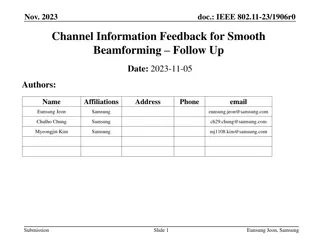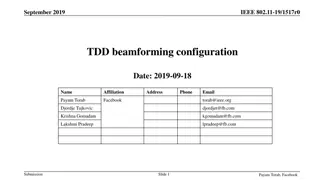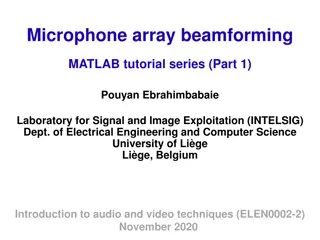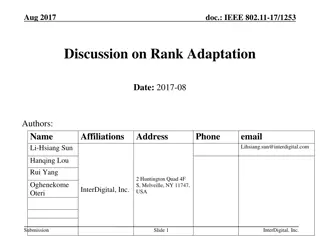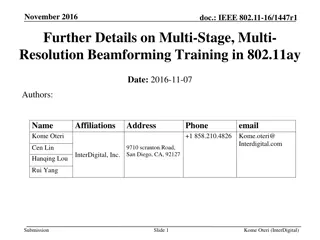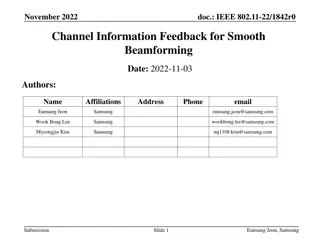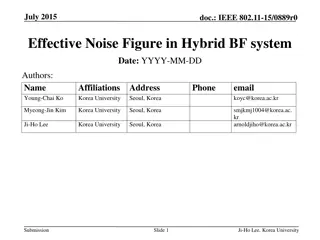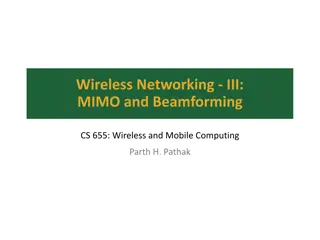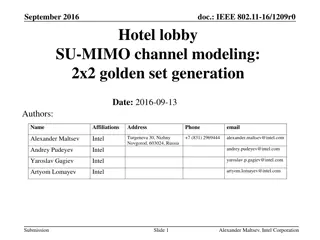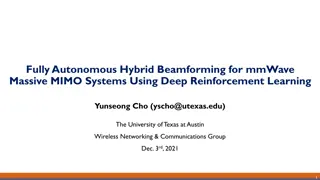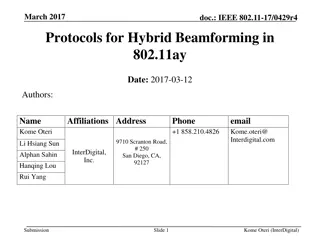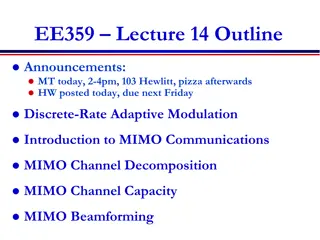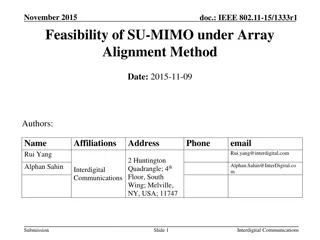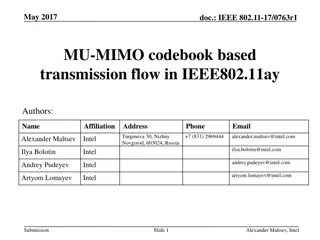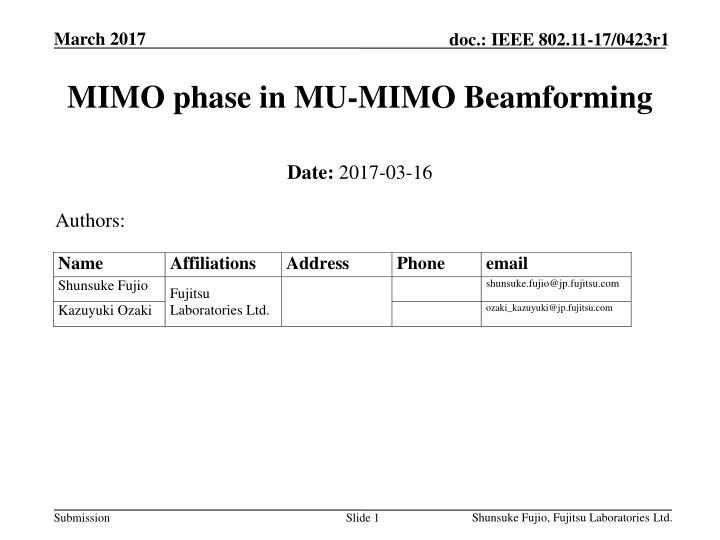
Reducing Beamforming Training Overhead in MU-MIMO
This document discusses proposed changes to MIMO phase in MU-MIMO Beamforming to minimize beamforming training overhead. It covers the background of MU-MIMO beamforming, motivation for shorter training periods in certain scenarios, and a proposal to exclude some responders from the training phases based on feedback collected in the SISO phase. The aim is to optimize multiuser interference in MU transmission efficiently.
Download Presentation

Please find below an Image/Link to download the presentation.
The content on the website is provided AS IS for your information and personal use only. It may not be sold, licensed, or shared on other websites without obtaining consent from the author. If you encounter any issues during the download, it is possible that the publisher has removed the file from their server.
You are allowed to download the files provided on this website for personal or commercial use, subject to the condition that they are used lawfully. All files are the property of their respective owners.
The content on the website is provided AS IS for your information and personal use only. It may not be sold, licensed, or shared on other websites without obtaining consent from the author.
E N D
Presentation Transcript
March 2017 doc.: IEEE 802.11-17/0423r1 MIMO phase in MU-MIMO Beamforming Date: 2017-03-16 Authors: Name Shunsuke Fujio Affiliations Address Phone email shunsuke.fujio@jp.fujitsu.com Fujitsu Laboratories Ltd. ozaki_kazuyuki@jp.fujitsu.com Kazuyuki Ozaki Shunsuke Fujio, Fujitsu Laboratories Ltd. Submission Slide 1
March 2017 doc.: IEEE 802.11-17/0423r1 Abstract This contribution proposes changes on MIMO phase in MU-MIMO Beamforming to reduce beamforming training overhead Shunsuke Fujio, Fujitsu Laboratories Ltd. Submission Slide 2
March 2017 doc.: IEEE 802.11-17/0423r1 Background: MU-MIMO beamforming MU-MIMO Beamforming protocol is defined in Draft 0.2 This protocol comprises following consecutive phases: SISO phase: an I-TXSS subphase and a setup subphase MIMO phase: four subphases (shown in the figure) This protocol is designed to minimize interference among streams MIMO phase MU-MIMO selection MU-MIMO BF Setup MU-MIMO BF Training MU-MIMO FB Poll Initiator STA1 STA2 STA3 Responder MU-MIMO FBs Shunsuke Fujio, Fujitsu Laboratories Ltd. Submission Slide 3
March 2017 doc.: IEEE 802.11-17/0423r1 Motivation In some cases, signal power received by a STA might be very little unless the best sector is used For example, in a case where STAs create sharp beams in a LOS dominant environment In such cases, interference at the STA in MU transmission might be small even without MU-MIMO beamforming training That means shorter beamforming training is possible MU-MIMO with sharp beams in a LOS dominant environment STA (responder) little STA interference (initiator) STA (responder) Shunsuke Fujio, Fujitsu Laboratories Ltd. Submission Slide 4
March 2017 doc.: IEEE 802.11-17/0423r1 Proposal (1/2) Enable an initiator to exclude some responders from the MU-MIMO BF Training and the MU-MIMO FB Poll subphases The initiator collects feedback including Sector IDs and their corresponding SNRs from responders in the SISO phase Based on the feedback, the initiator can estimate whether multiuser interference in MU transmission is small at each of the responders If the interference at some of the responders is expected to be small, the initiator may exclude them from the subphases Shunsuke Fujio, Fujitsu Laboratories Ltd. Submission Slide 5
March 2017 doc.: IEEE 802.11-17/0423r1 Proposal (2/2) In the MU-MIMO BF Setup subphase, a BF Setup frame includes the AIDs of only the remaining responders to indicate them performing MU-MIMO beamforming training In the MU-MIMO BF Training and the MU-MIMO FB Poll subphases, the initiator sends frames to only the remaining responders the other responders ignore these subphases If all responders are excluded, these subphases are not present in the MIMO phase MIMO phase MU-MIMO selection MU-MIMO BF Setup MU-MIMO BF Training MU-MIMO FB Poll Initiator including AIDs of the remaining responders for only the remaining responders STA1 STA2 STA3 Responder MU-MIMO FBs Shunsuke Fujio, Fujitsu Laboratories Ltd. Submission Slide 6
March 2017 doc.: IEEE 802.11-17/0423r1 Conclusions Some responders might not need to perform MU- MIMO beamforming training in some cases This contribution proposed to enable an initiator to exclude some responders from MU-MIMO beamforming training process Shunsuke Fujio, Fujitsu Laboratories Ltd. Submission Slide 7
March 2017 doc.: IEEE 802.11-17/0423r1 STRAW POLL Do you agree to incorporate the changes proposed in (11-17-0424-00-00ay-cr-on-mimo-phase-in-mu-mimo- bf.docx) into the draft spec? Yes No Abstain Shunsuke Fujio, Fujitsu Laboratories Ltd. Submission Slide 8


